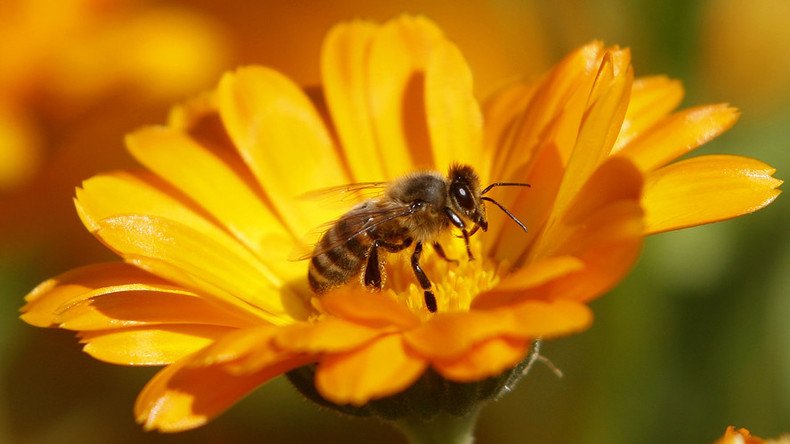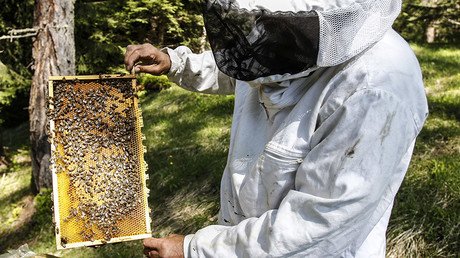Bee virus pandemic is human made, started with European bees - study

The spread of a devastating virus that is endangering global bee populations is manmade with human trade and transportation of bees for pollination driving the pandemic, a new study says.
UK researchers from the University of Exeter have found that the Apis mellifera honeybee, native to Europe, is a transmitter of Deformed Wings Virus (DWV). The deadly infection, mostly carried by the Varroa Destructor mite, threatens the existence of bees worldwide.
“The deformed wing virus is a major threat to honeybee populations across the world and this epidemic has been driven by the trade and movement of honeybee colonies,” says the study, published in the Science magazine on Friday.
Varroa mites are parasites that feed on adult honeybees and also on their larvae, and endanger entire hives. The virus attacks a honeybee pupa, causing it to shrink and deform bees’ wings.
Researchers have studied genetic samples of mites and honeybees from over 17 countries. They discovered the virus originated in Europe and subsequently migrated to North America, Australia and New Zealand.
“This is the first study to conclude that Europe is the backbone of the global spread of the bee-killing combination of Deformed Wing Virus and Varroa,” said Dr Lena Wilfert, senior author of the study.
The report calls for immediate action to halt the spread of the virus and prevent it from entering regions where the infection is yet to manifest.
“We must now maintain strict limits on the movement of bees, whether they are known to carry Varroa or not. It’s also really important that beekeepers at all levels take steps to control Varroa in their hives, as this viral disease can also affect wild pollinators,” Wilfert said, advocating stricter approaches to the transportation of bees.
Buzzing breakthrough: Scientists find out how to distract angry bees https://t.co/w7yDK412x6pic.twitter.com/ucU1Vn3ul1
— RT (@RT_com) 25 декабря 2015
Though vet checks are being carried out at the border, they are clearly not sufficient to stop the bug. Infected bees continue to appear in other continents. In addition, there is also the potential threat that other infections could pass through borders as easily as DWV has.
If trade controls are not tightened, “the consequences can be devastating, both for domestic animals and for wildlife,” warn the authors in the introduction to the study.
Honeybees are widely used in agriculture as efficient pollinators, which is vital for producing fruit and nut crops. The shortage of the bees may threaten agriculture in the long run.
While the demand for pollination services increases, bee numbers have been decreasing since the onset of the so-called colony collapse disorder in 2006. This was marked by a drastic decrease in North America’s honeybee population, and also in some European countries.













